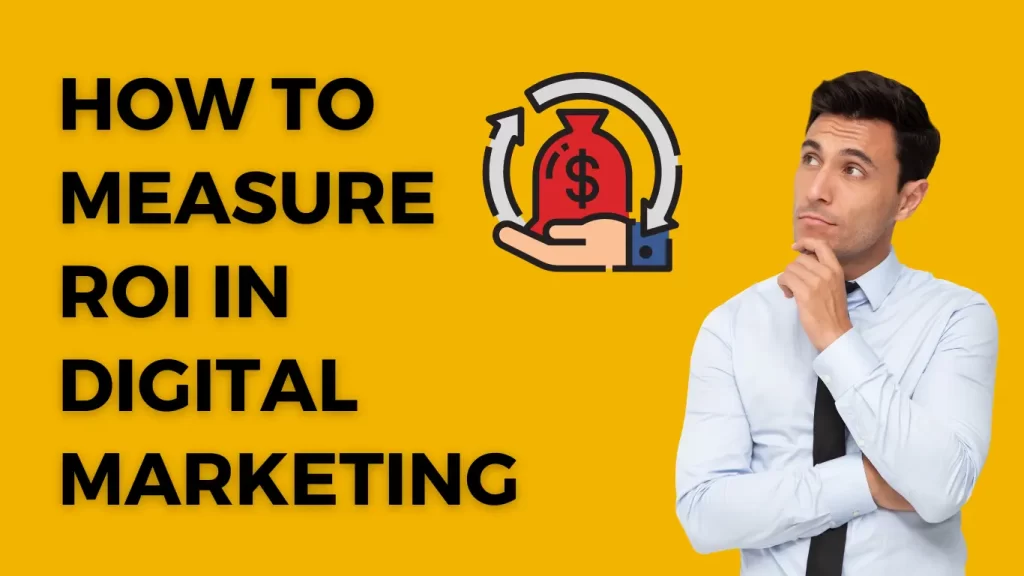The Importance of Setting Realistic Digital Marketing Goals
Reading Time: 4 minutesThe Importance of Setting Realistic Digital Marketing Goals Digital Marketing Goals – Digital marketing has become integral to modern business strategies, enabling companies to reach wider audiences and drive growth. However, digital marketing efforts can become directionless and ineffective without clear, realistic goals. In this article, we will explore the significance of setting realistic digital marketing goals and provide strategies for achieving them. Introduction In today’s fast-paced digital landscape, businesses face immense competition. To succeed, companies must set specific and attainable digital marketing goals that align with their overall business objectives. Without well-defined goals, organizations risk wasting resources and failing to make a significant impact in the online realm. Understanding Digital Marketing Goals 1. Defining goals Before delving into the importance of realistic goals, it is crucial to understand what digital marketing goals entail. Digital marketing goals are the desired outcomes and achievements a business aims to accomplish through its online marketing efforts. These goals can vary based on the nature of the business, target audience, and overall marketing strategy. 2. The role of Goals in Digital Marketing To measure Goals serve as guiding principles for digital marketing campaigns. They provide a clear direction and purpose, ensuring that efforts are focused and results-oriented. By defining specific goals, businesses can measure the success of their digital marketing initiatives, identify areas for improvement, and make data-driven decisions. ROI accurately, you need to focus on specific metrics that provide insights into your marketing performance. The following key metrics play a crucial role in assessing the ROI of your digital marketing campaigns: Get A Free Consultation The Significance of Realistic Digital Marketing Goals Setting realistic digital marketing goals is paramount for several reasons. 1. Focusing efforts and resources Realistic goals provide a focal point for digital marketing efforts, ensuring that resources are allocated efficiently. By channeling time, budget, and expertise towards specific goals, businesses can maximize their impact and generate meaningful results. 2. Improving decision-making Realistic goals facilitate informed decision-making processes. When businesses have well-defined goals, they can evaluate various strategies and tactics based on their alignment with those goals. This enables data-driven decision-making, minimizing the risk of pursuing ineffective or irrelevant marketing initiatives. 3. Motivating teams and individuals Realistic goals create a sense of purpose and motivation among marketing teams and individuals. When employees have clear objectives to work towards, they feel a greater sense of ownership and are more likely to be engaged and proactive in their roles. This fosters a positive work environment and enhances overall productivity. Get A Free Consultation Strategies for Setting Realistic Digital Marketing Goals To set realistic digital marketing goals, businesses should consider the following strategies: 1. Conducting a thorough analysis Before defining goals, businesses should conduct a comprehensive analysis of their current digital marketing performance, market conditions, and competitors. This analysis provides valuable insights that can inform the goal-setting process and ensure realistic expectations. 2. Identifying Key Performance Indicators (KPIs) Businesses should identify relevant Key Performance Indicators (KPIs) that align with their goals. These KPIs act as measurable metrics that reflect progress and success. By selecting appropriate KPIs, companies can track their performance and make informed decisions. 3. Breaking down goals into smaller milestones Large goals can often seem overwhelming and difficult to achieve. To enhance clarity and maintain motivation, businesses should break down their goals into smaller, more manageable milestones. This approach allows for incremental progress and provides opportunities to celebrate achievements along the way. 4. Prioritizing goals based on Impact Not all goals hold the same level of importance for a business. It is essential to prioritize goals based on their potential impact and relevance. By focusing on high-impact goals, businesses can direct their resources and efforts towards activities that generate the most significant returns. Get A Free Consultation: https://www.arrowmarketing360.com/contact-us Get A Free Consultation Overcoming Challenges in Setting Realistic Goals While setting realistic goals is crucial, businesses may face certain challenges in the process. 1. Addressing resource limitations Limited budgets, manpower, and technological capabilities can pose obstacles to setting and achieving goals. Businesses must carefully assess their available resources and determine how to allocate them effectively. This may involve seeking external support, optimizing existing resources, or revising goals to align with available means. 2. Managing external factors Digital marketing efforts can be influenced by various external factors, such as changes in market trends, customer behavior, or industry regulations. Businesses must remain adaptable and adjust their goals accordingly to account for these external influences. Regular monitoring and evaluation are vital to ensure goals remain relevant and attainable. 3. Adapting goals to changing market conditions Digital marketing is a dynamic field, with trends and technologies constantly evolving. Businesses must stay updated and flexible, adapting their goals to reflect changing market conditions. This flexibility ensures that goals remain realistic and in tune with the current digital landscape. Get A Free Consultation Tracking and Evaluating Progress To gauge the effectiveness of digital marketing goals, businesses should implement robust tracking and evaluation mechanisms. 1. Using Analytics tools Analytics tools provide valuable insights into the performance of digital marketing campaigns. By leveraging data, businesses can monitor key metrics, identify trends, and gain actionable intelligence to optimize their strategies. 2. Regular Reporting and Assessment Regular reporting and assessment enable businesses to evaluate their progress towards goals. By reviewing performance periodically, organizations can identify areas of improvement, make necessary adjustments, and ensure ongoing alignment with their objectives. Conclusion Setting realistic digital marketing goals is paramount for achieving success in today’s competitive landscape. Realistic goals align digital marketing efforts with broader business objectives, enable effective resource allocation, and foster informed decision-making. By following strategies such as thorough analysis, breaking down goals, and adapting to changing market conditions, businesses can set realistic goals and drive impactful digital marketing campaigns. Get A Free Consultation FAQs Why are realistic goals important in digital marketing? Realistic goals are important in digital marketing because they provide a clear direction, align efforts with business objectives, and enable accurate measurement of progress and success. How can unrealistic goals hinder
The Importance of Setting Realistic Digital Marketing Goals Read More »


